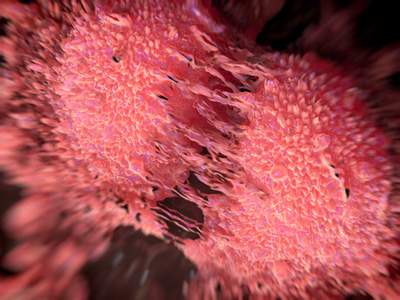New study finds laws of nature predict cancer evolution
Posted: 19 January 2016 | Victoria White | No comments yet
Researchers believe that in the future, they could predict how a cancer will grow and develop by applying natural laws to single genetic snapshots taken from a cancer…


Cancers evolve over time in patterns governed by the same natural laws that drive physical and chemical processes as diverse as the flow of rivers or the brightness of stars, a new study reports.
Researchers from The Institute of Cancer Research, London, and Queen Mary University of London (QMUL) believe that in the future, they could predict how a cancer will grow and develop by applying natural laws to single genetic snapshots taken from a cancer.
The intriguing research raises the possibility that doctors could take clinical decisions on how an individual patient’s cancer will change, and what treatments should be used, by applying mathematical formulas to tumour biopsies.
The scientists used a wealth of data – generated from more than 900 tumours of 14 different types – to show that many cancers evolve in particular patterns that can be predicted. Many cancer types, such as bowel, stomach and some lung cancers, closely followed a path set out by a theoretical model describing the accumulation and spread of genetic mutations during a single rapid expansion.
The model, created by the research team, predicted that in many tumours, all important cancer genes are already present at the beginning of tumour growth, and new mutations inside the tumour are essentially ‘passengers’, with no additional effect.
The team showed that these passenger mutations would accumulate following a so-called 1/ power-law distribution.
The model was less good at predicting the path of some other cancers, such as brain and pancreatic tumours, suggesting that in these cases natural selection – driven by pressures on resources and space – might play a greater role in the spread of mutations.
Analysis provides a new way to distinguish mutations that should be targeted with treatment
But in the future, the development of these types of cancers could also be predicted using more elaborate mathematical models, the scientists said. The next step in their research is to determine how the new predictive features they can measure map to outcomes for patients over time.
This new analysis of cancer data potentially has important clinical implications – providing a new way to distinguish mutations that should be targeted with treatment, versus ‘passenger’ mutations that may have no effect on cancer cell growth.
Commenting on the research, Dr Andrea Sottoriva, Chris Rokos Fellow in Evolution and Cancer at The Institute of Cancer Research, London, said: “Our study shows that the spread of mutations through a cancer follows natural laws – and is therefore theoretically predictable, just as we can predict the movement of celestial bodies or the weather.
“This predictability means that the vast amount of genetic data we can generate from tumour biopsies could tell us how a given cancer will develop over time – which mutations will come to drive it into more aggressive disease, when they will emerge, and which drugs are best to treat them. Like in a game of chess, the aim is anticipating the next move of the adversary, to ultimately win the game.”
Related organisations
Cancer Research, Queen Mary University of London, The Institute of Cancer Research (ICR)



